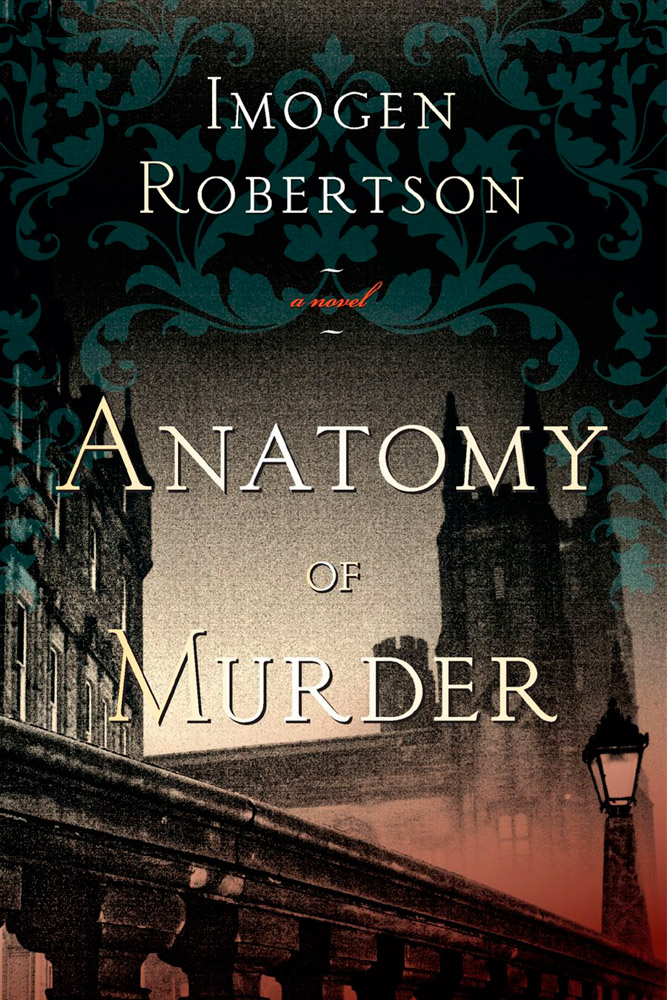
Anatomy of Murder
Crowther and Westerman Series, Book 2
کتاب های مرتبط
- اطلاعات
- نقد و بررسی
- دیدگاه کاربران
نقد و بررسی

Starred review from December 5, 2011
Robertson improves on her impressive debut, Instruments of Darkness (2011), with her second historical starring anatomist Gabriel Crowther and his partner in detection, Harriet Westerman. In the gripping prologue, set in 1781 off the Newfoundland coast, Westerman’s husband, the captain of an English warship, captures an intelligence officer from a French vessel he defeats in battle. The captain, after questioning the prisoner, suffers an accidental blow to the head that renders him unconscious. He eventually regains consciousness, but has lost his memory, much to the dismay of government officials in London, who were hoping he could help identify a new foreign spymaster planted on English shores. Meanwhile, the Admiralty enlists Crowther and Westerman to investigate how a man’s body that may belong to an operative for the French ended up in the Thames. Memorable prose, strong and unusual leads, a sophisticated plot with several unexpected turns, and an accurate portrayal of the period all make this a winner. Agent: Annette Green.

February 1, 2012
Spies, corpses, tarot cards and countertenors combine in this appealing if overextended adventure featuring a pair of amateur sleuths in 18th-century London. Although British novelist Robertson (Instruments of Darkness, 2011, etc.) has no difficulty resuming the engaging tone of her period series, this sequel, after its punchy prologue, has a noticeably slacker pace. Mrs. Harriet Westerman, one half of the detective duo, is preoccupied with the mental health of her naval captain husband James, wounded after capturing a French ship carrying a spy during the war with the American Rebels. Now Harriet and her forensic scientist friend Gabriel Crowther are invited by the British authorities to help trace the espionage links to London, starting with the examination of a body found floating in the Thames. These investigations, and the dark fears of a slum-dwelling fortune-teller, are the driving forces for some two-thirds of the story, and they're not enough to sustain excitement, even when packed with atmospheric background and well-researched historical detail. More corpses follow, as well as a predictable, busy denouement, none of which diminishes the sense of a weakly plotted tale and a small cast of characters too conveniently connected. Background authenticity is a substitute for foreground thrills in a solid but less-enthralling follow-up. Book three is under way.
COPYRIGHT(2012) Kirkus Reviews, ALL RIGHTS RESERVED.

January 1, 2012
In this sequel to Instruments of Darkness, Harriet Westerman has traveled to London to be near her husband, a naval commander recovering from injuries sustained at sea. There, she and anatomist Gabriel Crowther are asked to investigate a murder that leads them into the worlds of opera and espionage. Harriet's outspoken, emotional nature and Gabriel's scientific skills complement each other. A subplot involves Mrs. Bligh, a clairvoyant who is troubled by a reading she gives to a young woman. When she discovers that the woman has died, Mrs. Bligh is convinced the girl has been murdered and investigates. The two stories, though taking place in different classes of Georgian society, eventually intertwine in a surprising conclusion. VERDICT The author has done her research (with two pages of historical notes as proof), and the authentic details and dialog transport readers back to 1781 London. However, the many references to the previous book make it essential that new readers start with that one. Fans of such historical mystery authors as Anne Perry and Charles Finch will delight in this new series.--Jean King, West Hempstead P.L., NY
Copyright 2012 Library Journal, LLC Used with permission.

January 1, 2012
Like Anne Perry's mysteries, this menacing story set in Georgian London explores the complicated motives driving every character involved to act as they do while pulling together a colorful array of subplots. The death of Fitzraven, former musician and suspected spy, is just the beginning of a string of dark deeds. A large cast of characters makes it difficult to keep names straight, though key players are fully drawn. Some are dear, like little Stephen Westerfield; some vaguely threatening, like Jocasta the fortune-teller; and others are definitely up to no good. Seasoned mystery readers may guess who is behind the killings at the opera house, though few will realize the extent of others' involvement. This second adventure starring Mrs. Westerman, stubborn and independent society matron, and ascetic anatomist Gabriel Crowther connects some of the dots from Instruments of Darkness (2011) and hints of further adventures to come. The melodramatic final scenes nearly destroy the mood, but by then, momentum will keep those pages turning. Readers interested in early autopsy practices will also want to try The Anatomy of Deception(2008), by Lawrence Goldstone.(Reprinted with permission of Booklist, copyright 2012, American Library Association.)

























دیدگاه کاربران